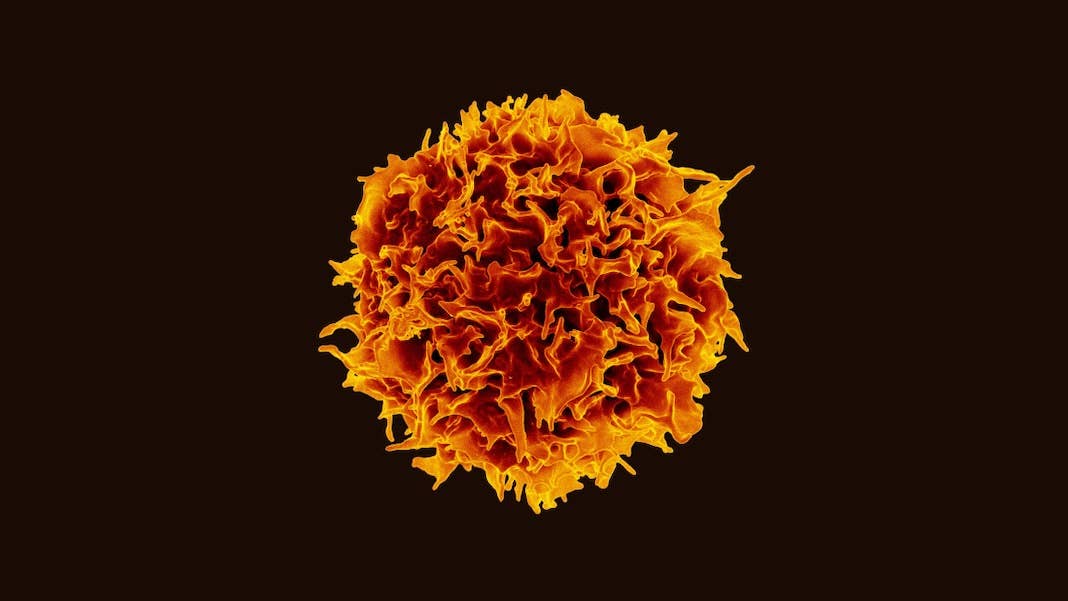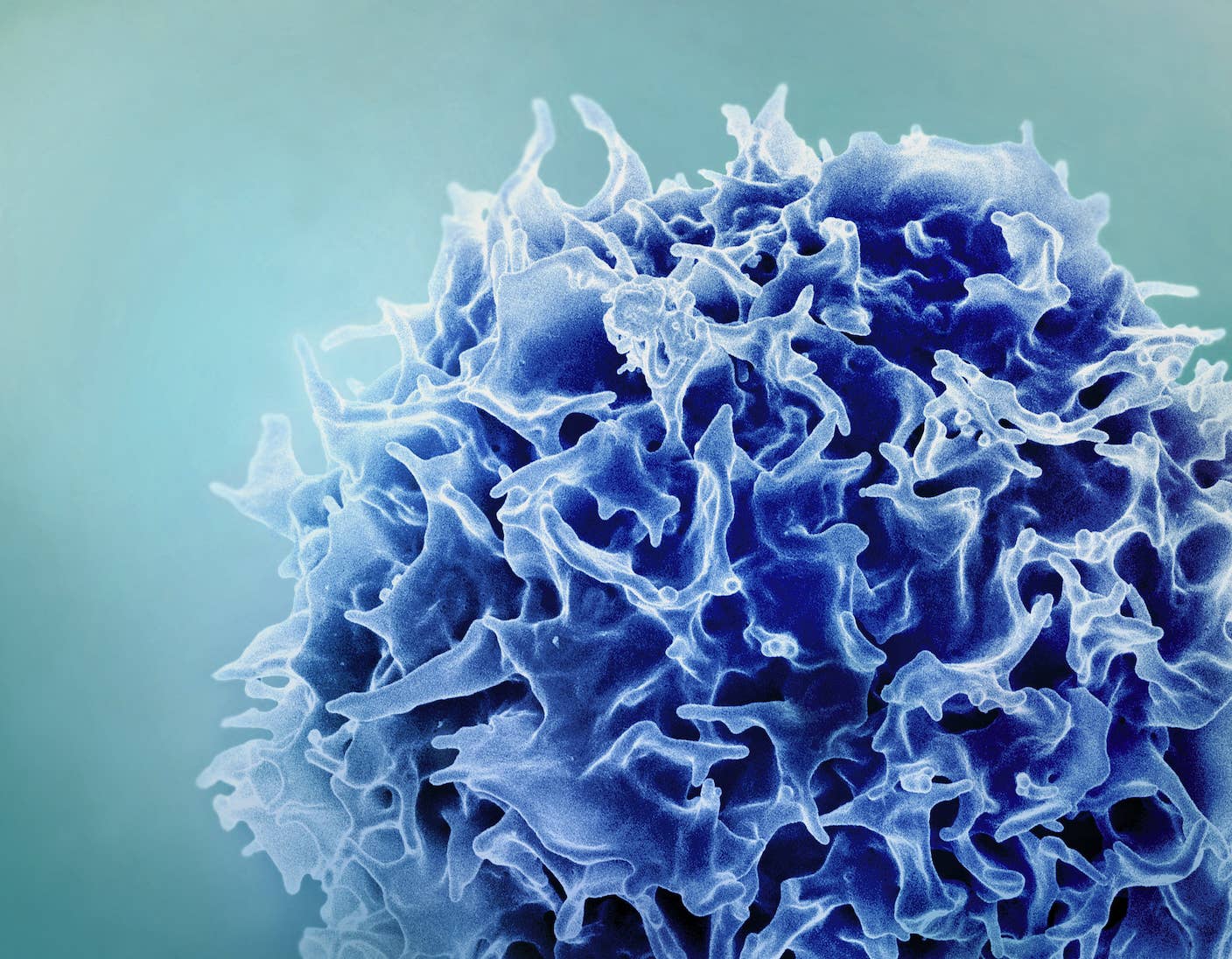Cancer-Killing Duo Hunts Down and Destroys Tumors With Surprising Alacrity

Share
Bacteria may seem like a strange ally in the battle against cancer.
But in a new study, genetically engineered bacteria were part of a tag-team therapy to shrink tumors. In mice with blood, breast, or colon cancer, the bacteria acted as homing beacons for their partners—modified T cells—as the two sought out and destroyed tumor cells.
CAR T—the name for therapies using these cancer-destroying T cells—is a transformative approach. First approved by the US Food and Drug Administration (FDA) for a type of deadly leukemia in 2017, there are now six treatments available for multiple types of blood cancers.
Dubbed a “living drug” by pioneer researcher Dr. Carl June at University of Pennsylvania, CAR T is beginning to take on autoimmune diseases, heart injuries, and liver problems. It is also poised to wipe out senescent “zombie cells” linked to age-related diseases and fight off HIV and other viral infections.
Despite its promise, however, CAR T falters when pitted against solid tumors—which make up roughly 90 percent of all cancers.
“Each type of tumor has its own little ways of evading the immune system,” said June previously in Penn Medicine News. “So there won’t be one silver-bullet CAR T therapy that targets all types of tumors.”
Surprisingly, bacteria may cause June to reconsider—the new approach has potential as a universal treatment for all sorts of solid tumors. When given to mice, the engineered bugs dug deep into the cores of tumors and readily secreted a synthetic “tag” to draw in nearby CAR T soldiers. The molecular tag only sticks to the regions immediately surrounding a tumor and spares healthy cells from CAR T attacks.
The engineered bacteria could also, in theory, infiltrate other types of solid tumors, including “sneaky” ones difficult to target with conventional therapies. Together, the new method called ProCAR—probiotic-guided CAR T cells—combines bacteria and T cells into a cancer-fighting powerhouse.
It showcases “the utility of engineered bacteria as a new enhancement to CAR T cell therapy,” said Eric Bressler and Dr. Wilson Wong at Boston University, who were not involved in the study.
Double Tap
Hang on, what’s CAR T again?
In a nutshell, CAR T therapies use T cells that have been genetically engineered to boost their existing abilities. T cells are already natural born killers that hunt down and destroy viruses, bacteria, and cancers inside our body. They use cellular “claws” to grab onto special proteins on the surfaces of target cells—called antigens—without damaging nearby healthy cells.
But cancer cells are tricky foes. Their antigens rapidly mutate to avoid T cell surveillance and attacks. CAR T therapy overrides this defense by engineering T cells to better seek and destroy their targets.
The process usually goes like this. T cells are extracted in a blood draw. Scientists then insert genes into the cells to make a new protein “claw” to grab onto a specific antigen. These engineered cells are infused back into the patient’s body where they hunt down that antigen and destroy the target cell. Recent work is also exploring directly editing T cells inside the body.
CAR T has done wonders for previously untreatable blood cancers. But solid tumors are a different story.
A big problem is targeting. Many blood cancers have a universal antigen that signals “I’m cancerous,” making it relatively easy to engineer CAR T cells to find them.
Solid tumors, in contrast, have a wide variety of antigens—many of which are also present in normal tissues—lowering CAR T cell efficiency and increasing the chances of deadly side effects. Even worse, cancer cells pump out glue-like proteins that build a protective shield around cancers. Called the tumor microenvironment, the barrier is highly toxic to CAR T cells. Its low oxygen levels readily destroy the membranes of CAR T cells. Like popped balloons, the cells spill their contents into surrounding areas, in turn driving inflammation.
What can survive this tumor wasteland? Bacteria.
A Universal Antigen
The new study transformed bacteria into Trojan horses that can, in theory, infiltrate any solid tumor. The chosen bacteria, a strain of E. coli, is already used to ease gastrointestinal and metabolic issues. They’re easy to genetically reprogram and can release biological payloads into the cores of tumors, making them perfect candidates for “tagging” cancers in CAR T.
Be Part of the Future
Sign up to receive top stories about groundbreaking technologies and visionary thinkers from SingularityHub.


To design the tags, the team engineered a protein antigen that can anchor itself to components in the tumor and glows fluorescent green. Tumors coated in this designer antigen make them easy to spot and vulnerable to CAR T cells designed to destroy them.
The team then genetically reprogrammed bacteria to release their antigen payload once they reached the tumor microenvironment.
In a proof of concept, the tag-team system reduced cancer growth and increased survival in mice with an aggressive blood cancer. Treatments using probiotics with a nonfunctional tag didn’t help. Treated mice happily went about their day and maintained a healthy body weight as their tumors shrank. The engineered bacteria lingered near the tumors for at least two weeks.
Further tests in mice with colon cancer showed similarly positive outcomes. A dose of bacteria followed by two doses of CAR T cells reduced tumor size four-fold 22 days after treatment.
Another Leg Up
The system worked, but the team wasn’t satisfied. The amount of antigen produced depends on bacterial growth, causing the tag’s efficiency to ebb and flow with the bacterial population.
To give the system a boost, the team added another genetic circuit into the bacteria, allowing them to release a chemical that attracts CAR T cells. The improved method reduced tumors in mice with breast cancer after two shots into the bloodstream.
“Combining the advantages of tumor-homing bacteria and CAR-T cells provides a new strategy for tumor recognition, and this builds the foundation for engineered communities of living therapies,” said study author Rosa Vincent, at Columbia University.
The strategy could be especially powerful in tumors without obvious antigens. However, scaling up the strategy will take some effort. Cancers in humans are roughly 0.8 inches in diameter—about three-fourths of a quarter.
While a low estimate for multiple types of cancers, that’s still “20- to 40-fold larger than the mouse tumors in this study,” said Bressier and Wong. Further studies will have to explore how well the synthetic antigen diffuses in increasingly large cancers.
Safety is another concern. Compared to mice, humans are more sensitive to potential toxins produced by bacteria. Based on previous clinical trials with engineered bacteria, the solution may be more genetic engineering to dampen toxin-related genes.
“While we’re still in the research phase,” the results “could open up new avenues for cancer therapy,” said study author Dr. Tal Danino.
Image Credit: Colorized scanning electron microscope image of a T cell / NIAID
Dr. Shelly Xuelai Fan is a neuroscientist-turned-science-writer. She's fascinated with research about the brain, AI, longevity, biotech, and especially their intersection. As a digital nomad, she enjoys exploring new cultures, local foods, and the great outdoors.
Related Articles

Single Injection Transforms the Immune System Into a Cancer-Killing Machine

New Gene Drive Stops the Spread of Malaria—Without Killing Any Mosquitoes

New Immune Treatment May Suppress HIV—No Daily Pills Required
What we’re reading
